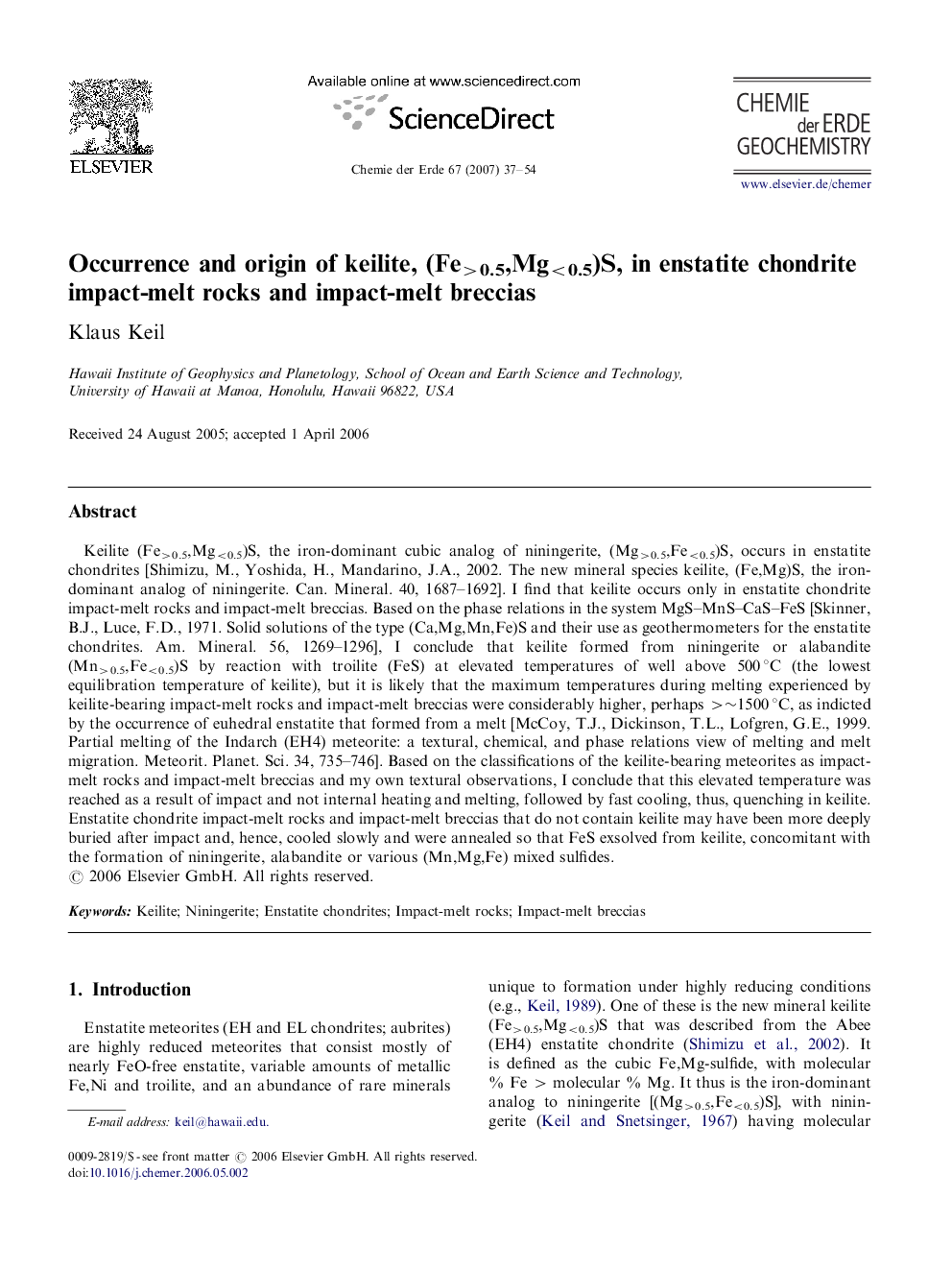| کد مقاله | کد نشریه | سال انتشار | مقاله انگلیسی | نسخه تمام متن |
|---|---|---|---|---|
| 4407223 | 1307358 | 2007 | 18 صفحه PDF | دانلود رایگان |

Keilite (Fe>0.5,Mg<0.5)S, the iron-dominant cubic analog of niningerite, (Mg>0.5,Fe<0.5)S, occurs in enstatite chondrites [Shimizu, M., Yoshida, H., Mandarino, J.A., 2002. The new mineral species keilite, (Fe,Mg)S, the iron-dominant analog of niningerite. Can. Mineral. 40, 1687–1692]. I find that keilite occurs only in enstatite chondrite impact-melt rocks and impact-melt breccias. Based on the phase relations in the system MgS–MnS–CaS–FeS [Skinner, B.J., Luce, F.D., 1971. Solid solutions of the type (Ca,Mg,Mn,Fe)S and their use as geothermometers for the enstatite chondrites. Am. Mineral. 56, 1269–1296], I conclude that keilite formed from niningerite or alabandite (Mn>0.5,Fe<0.5)S by reaction with troilite (FeS) at elevated temperatures of well above 500 °C (the lowest equilibration temperature of keilite), but it is likely that the maximum temperatures during melting experienced by keilite-bearing impact-melt rocks and impact-melt breccias were considerably higher, perhaps >∼1500 °C, as indicted by the occurrence of euhedral enstatite that formed from a melt [McCoy, T.J., Dickinson, T.L., Lofgren, G.E., 1999. Partial melting of the Indarch (EH4) meteorite: a textural, chemical, and phase relations view of melting and melt migration. Meteorit. Planet. Sci. 34, 735–746]. Based on the classifications of the keilite-bearing meteorites as impact-melt rocks and impact-melt breccias and my own textural observations, I conclude that this elevated temperature was reached as a result of impact and not internal heating and melting, followed by fast cooling, thus, quenching in keilite. Enstatite chondrite impact-melt rocks and impact-melt breccias that do not contain keilite may have been more deeply buried after impact and, hence, cooled slowly and were annealed so that FeS exsolved from keilite, concomitant with the formation of niningerite, alabandite or various (Mn,Mg,Fe) mixed sulfides.
Journal: Chemie der Erde - Geochemistry - Volume 67, Issue 1, 11 May 2007, Pages 37–54